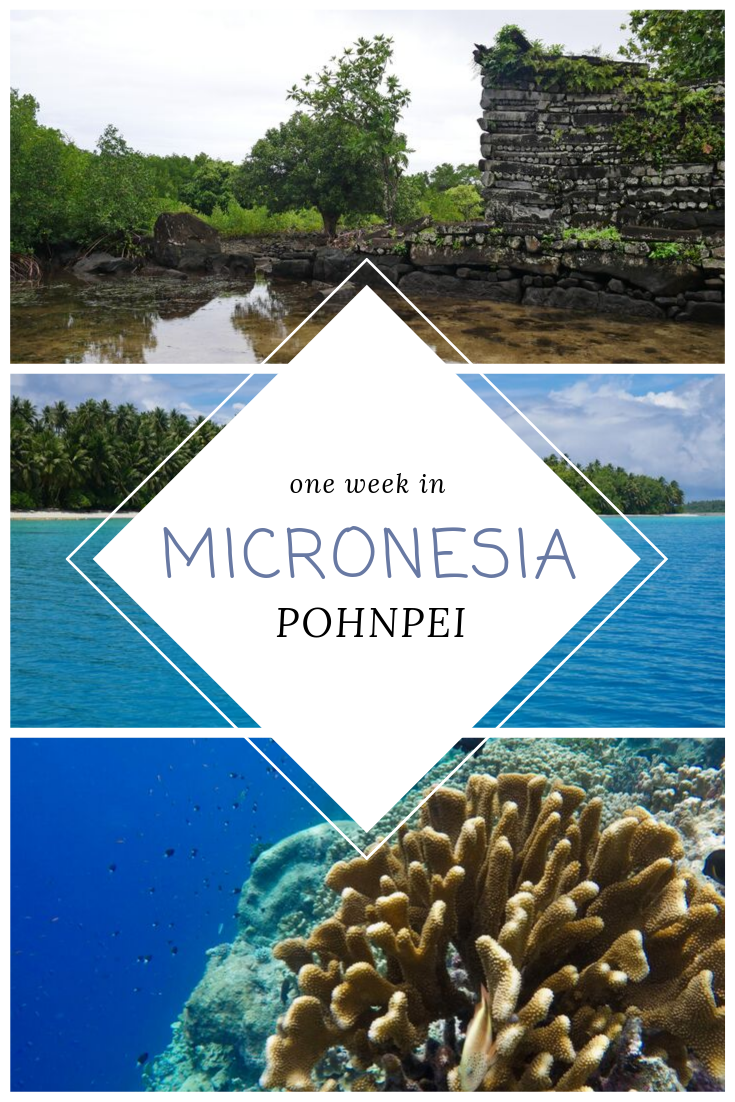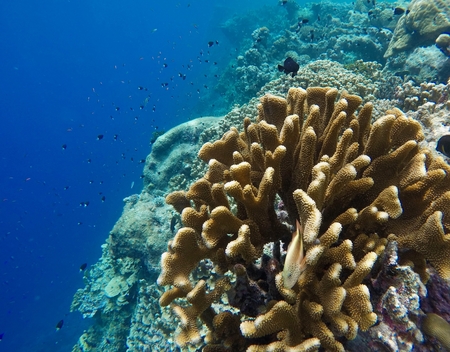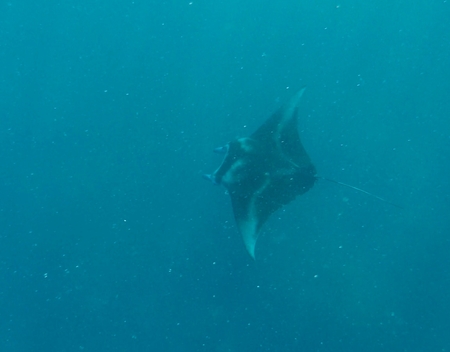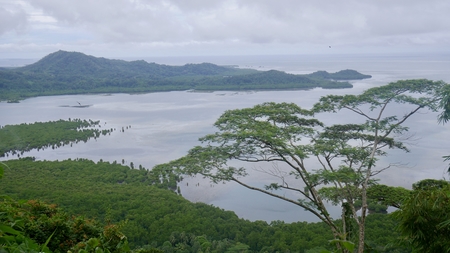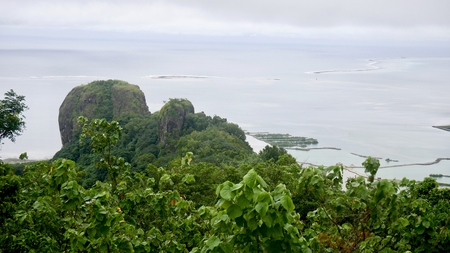Travel Guide to Pohnpei: Micronesia’s Emerald Isle
Pohnpei is a tropical Micronesian paradise that lies far from the trodden tourist trail. One of the rainiest and most remote places on Earth, the jungle-clad speck of green is a Garden of Eden that tourism forgot.
But for avid explorers and lovers of off-beat destinations, Pohnpei offers a diverse array of things to see and do—both above and below sea level. From ancient ruins to pristine mangrove forests and from gushing waterfalls to remote atolls, the Micronesian island is a wonderland of undiscovered gems.
I visited Pohnpei with my friend, Mariella, following five blissful days in the Marshall Islands. During our weeklong stay in Pohnpei, we toured the island from top to bottom, side to side. We climbed atop its forested peaks, circled its mangrove-ringed perimeter and plunged into its fish-speckled waters. Our week-long Micronesia itinerary gave us an abundant amount of time to uncover Pohnpei’s top attractions and learn about the history that makes Micronesia’s Emerald Isle such an enchanting place to visit.
THINGS TO DO IN POHNPEI MICRONESIA
The Federated States of Micronesia (referred to as the FSM or Micronesia for short) are a cluster of islands spread out over the vast Pacific Ocean. Pohnpei—Micronesia’s largest island—is a lush tangle of twisting vines and verdant rainforest. For those who can brave its sopping climate and frequent torrential downpours, it is a hiker’s wonderland and an explorer’s dream.
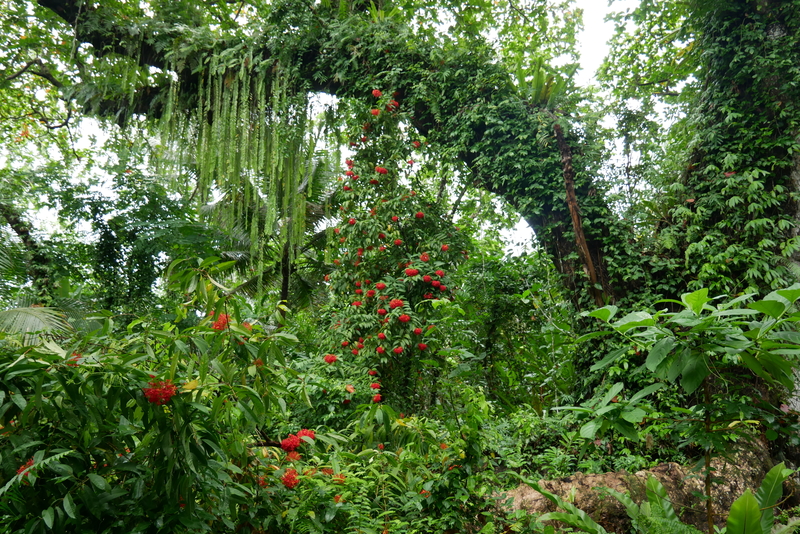
Despite being situated smack dab in the middle of the ocean, Pohnpei has no noteworthy beaches. Instead, what the island lacks in beaches, it makes up for with its lush and mountainous interior and its ring of wildlife-rich coral.
-
SNORKEL OR DIVE MANTA ROAD
On the first day of our Pohnpei itinerary, Mariella and I decided to book a snorkeling tour with the Pohnpei Surf Club. The half day excursion brought us to Manta Road—a part of the reef that is teeming with sea life. Manta Road is home to a dizzying array of tropical fish and, of course, to the majestic and graceful manta rays that give the area its name.
The manta rays meander up and down Manta Road, feeding on fish. We saw more than a dozen mantas during our day trip. In so many ways, the experience reminded me of snorkeling in Indonesia’s Komodo National Park.
The reef on either side of Manta Road contains resplendent coral gardens that host a wide variety of colorful fish. I must have spent hours weaving my way between striking coral formations and trying to photograph the area’s diverse marine life.
-
HIKE TO SOKEH’S RIDGE
The trek to Sokeh’s Ridge is one of the most popular hikes in Micronesia. The three mile roundtrip hike leads to Sokeh’s Rock—Pohnpei’s dominant geographic landmark and the island’s most impressive natural feature.
Mariella and I chose to hike to the ridge on our second full day in Pohnpei. Though various tour outfitters advertise organized hikes up Sokeh’s Peak, we found that the trail is accessible from Kolonia and easily doable without a guide (though having maps.me downloaded certainly helps).
The prominent monolith lies on Sokeh’s Island, detached from the rest of Pohnpei by a narrow mangrove channel. The island is notable for its World War II relics and its birds-eye views of the airport, mangroves and surrounding mountains.
World War II relics in Micronesia stand as a reminder of the Japan’s legacy in the Pacific. Throughout Pohnpei, cannons, army tanks and gun batteries lie tangled in tree roots, submerged in grasses, and largely forgotten.
-
KAYAK IN THE MANGROVE FORESTS
Pohnpei is almost entirely surrounded by mangroves. The Mangrove Bay Hotel—our home base during the six days we spent in Microneisa—sits in a lovely cove, with stunning views of Sokeh’s Island. A thin mangrove-flanked channel separates Sokeh’s Island from Pohnpei’s mainland. Kayaking through the passageway offers a serene escape into the heart of the island’s mangrove forests.
The narrow channel lies to the left of the Mangrove Bay Hotel, past the Sokeh’s Access Road Bridge. Beyond the bridge, a tangled wonderland of mangroves and birdsong awaits.
-
TAKE A DAY TRIP TO AND ATOLL
And Atoll is a popular day trip from mainland Pohnpei. The stunning coral island lies amidst warm turquoise water. Its protected reef is one of the best places in the Pacific for snorkeling and diving.
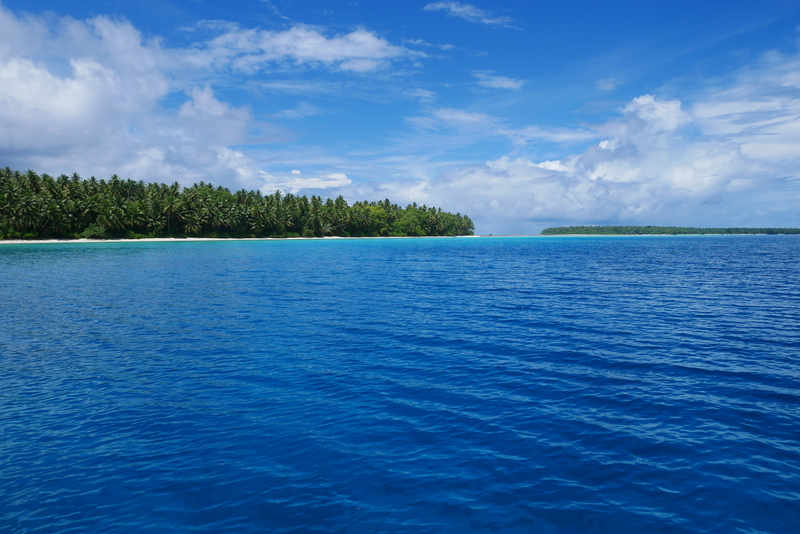
And Atoll is located roughly one hour from mainland Pohnpei by speedboat. It is largely uninhabited, save for the family that overseas the island and runs the small cluster of cabins on the atoll’s main beach.
Our day trip to And Atoll included a few hours of beach time, as well as the opportunity to snorkel within the atoll’s lagoon.
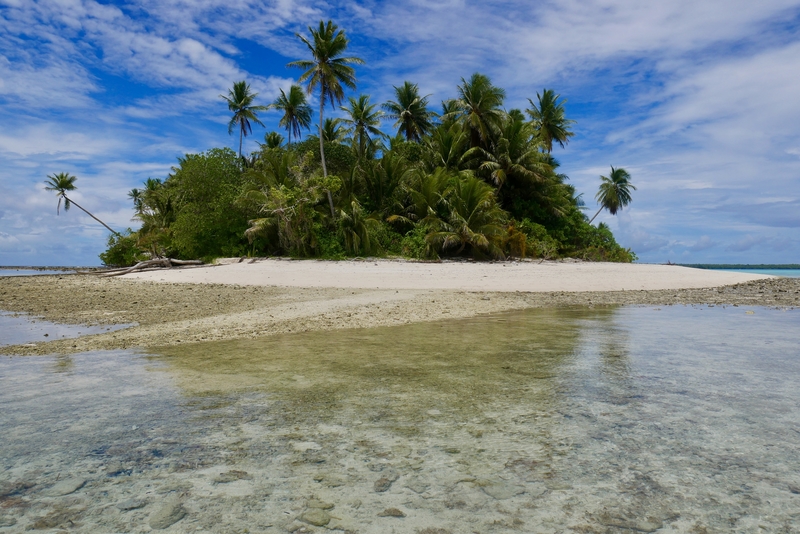
Due to the area’s biological diversity, the reef near And Atoll is exceptional. A kaleidoscope of colorful coral hosts a dizzying array of marine life. Iridescent fish dart between more varieties of coral than I ever knew existed. Turtles and reef sharks lurk in the crevices of the coral gardens.
I’ll even go so far as saying that the reef at And Atoll in Micronesia rivals that of Palau’s South Rock Islands.
Most tour companies require favorable winds and a minimum of eight bookings before undertaking the hour-long journey to And. We were lucky to find a group of Japanese tourists that had planned a dive trip around the Atoll. For a $13o per person fee, Club Pareo allowed us to tag along for the ride.
-
VISIT THE MYSTERIOUS NAN MADOL RUINS
Pohnpei’s mysterous Nan Madol ruins (not to be confused with the ruins of Pompeii in Italy) are UNESCO-recognized marvels that have been swallowed by the island’s surrounding vegetation. The ruins are a top tourist attraction in Micronesia and one of the most impressive monuments in the Pacific. Yet, despite their magnificence, they only receive a handful of visitors per day.
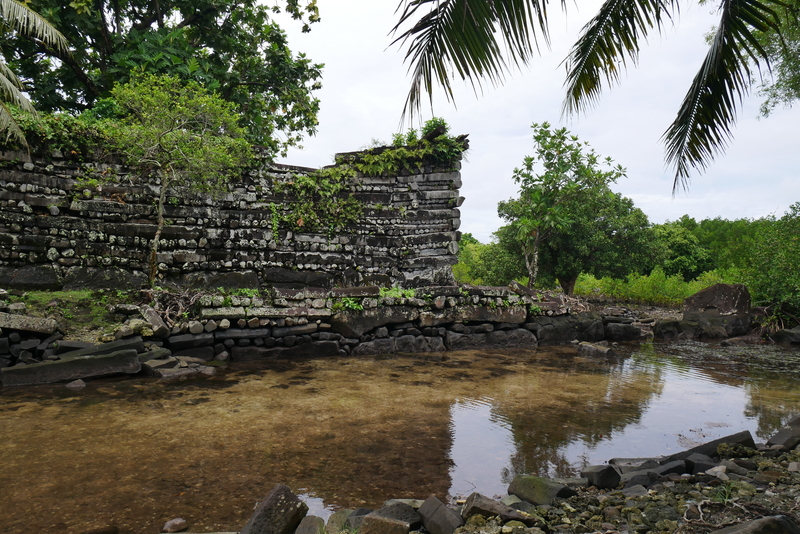
Nan Madol is an archeological enigma that has puzzled researchers and historians for decades. Some have even gone so far as to hypothesize that Nan Madol is Lemuria, or the lost city of Atlantis.
Nan Madol means ‘in the spaces between’—referring to the waterways that link the area’s 92 artificial islands. During high tide, it is possible to kayak through the waterways of Nan Madol and visit the far reaches of the UNESCO World Heritage Site. Mariella and I were hoping to visit the ruins by kayak, but the tide calendar was unfortunately not in our favor.
Instead, we hired a driver to take us to the ruins and show us the site’s main accessible ceremonial structure.
The entrance fee to Nan Madol consists of three payments—$1 at the road leading to the temple complex, $3 at the entrance and $3 at the ruins themselves.
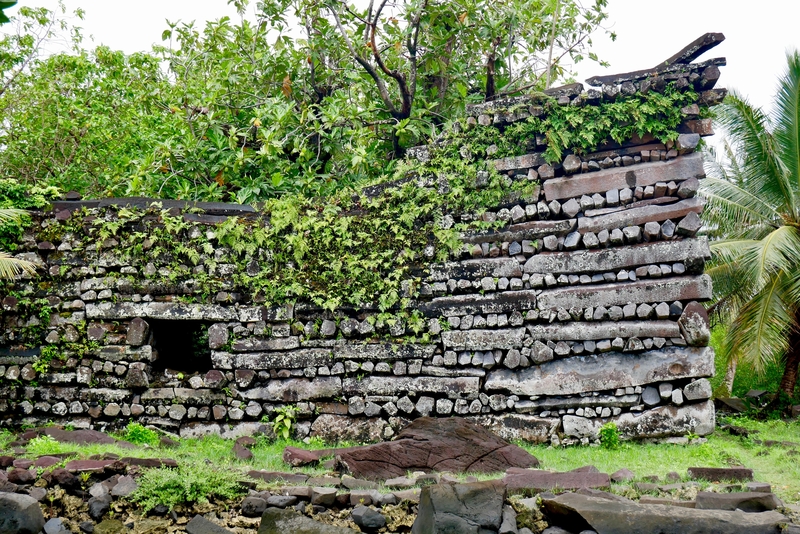
Nan Madol was the ceremonial and political seat of the Saudeleur Dynasty, which united Pohnpei’s population until 1628. According to local legend, the complex was constructed by twin sorcerers Olisihpa and Olosohpa. The brothers allegedly transported the stones from various locations around the island, using magic.
In the 1800s, Nan Madol was abruptly deserted and, to this day, nobody is quite sure what happened. Some attribute the area’s decline to unsustainable population numbers. Others blame disease, natural disasters or the arrival of Westerners.
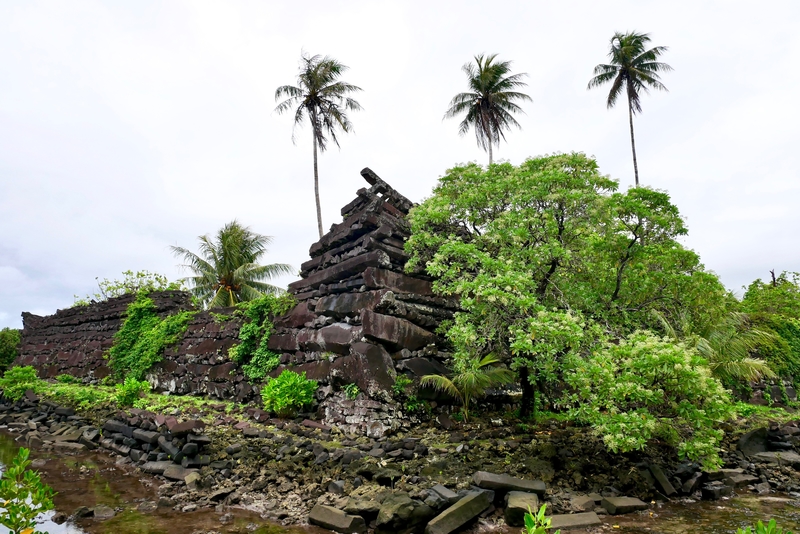
But, magic aside, how did the stones get to where they are now? The boulders that comprise Nan Madol weigh up to five tons. They lay stacked on top of one another, log cabin style.
Much like Stonehenge or the Easter Island’s Moai, the construction of Nan Madol remains a mystery. And today, like Cambodia’s Angkor Wat, the ruins lie tangled in tree roots and largely swallowed by the surrounding forest.
-
VISIT THE KAPIROH WATERFALL
The Kapiroh Waterfall, down the road from Nan Madol, is an easy side trip when visiting the ruins. The waterfall cascades from the lush rainforest into cool pools of freshwater. It is a force of nature and one of the island’s main iconic landmarks.
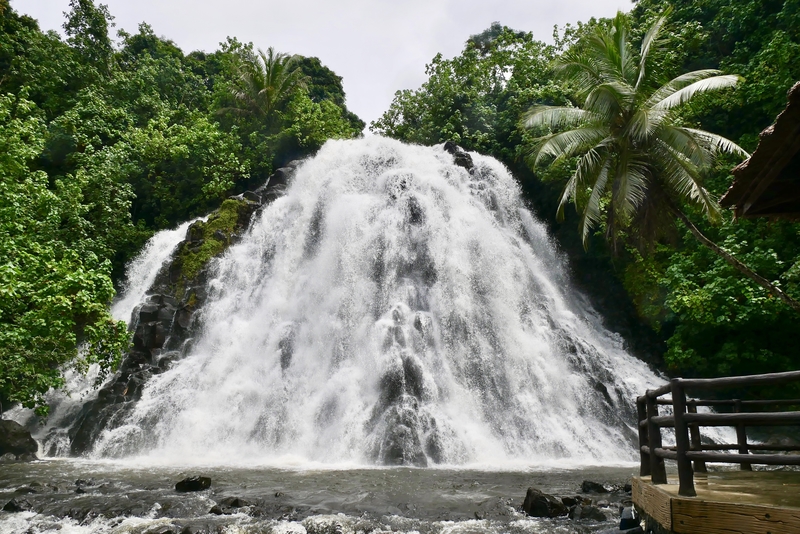
GETTING TO POHNPEI
Like other islands in the Pacific, Pohnpei can be expensive and difficult to reach. United’s Island Hopper flies between Honolulu and Guam, stopping in Pohnpei en-route. The exorbitantly priced flight is a lifeline for the communities scattered throughout the Micronesian islands.
The route runs three times per week, in each direction. It is Pohnpei’s only link to the Americas.
WHERE TO STAY IN POHNPEI
The Mangrove Bay Hotel outside Kolonia is, hands down, one of the best places to stay in Pohnpei. The beautiful hotel sits on the water, boasting unparalleled views of Sokeh’s Ridge.
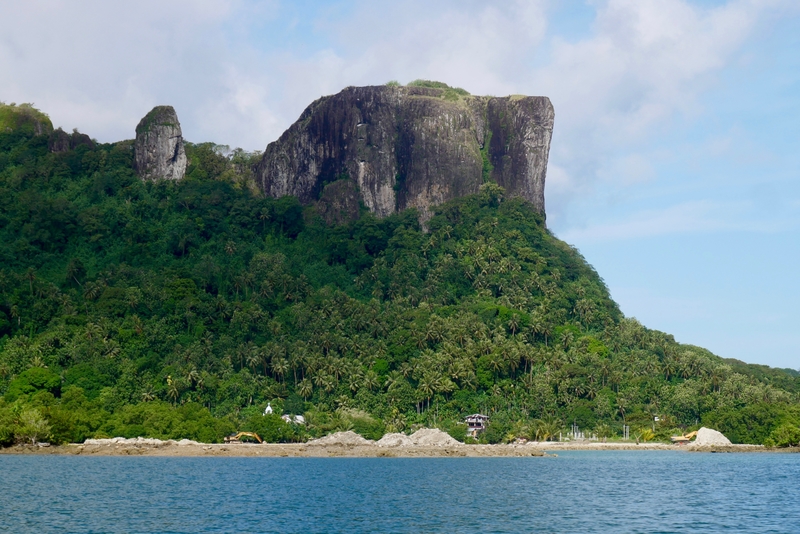
The Mangrove Bay Hotel has WiFi, air conditioning, clean rooms and free kayak rentals. The Pohnpei Surf Club operates on the hotel’s premises and leads a variety of surfing, diving and snorkeling excursions around the island.
The Mangrove Bay Hotel costs $120 a night, per room. For $100, the hotel’s singular budget room offers all the amenities of its standard rooms, with the exception of satellite TV. Mariella and I were happy to save $20 in exchange for a TV-free environment.
Though the Mangrove Bay Hotels offers incredible value per dollar when compared to the other accommodation options in Pohnpei, solo or budget-conscious travelers may also want to check out Yvonne’s Guesthouse or the popular Japanese-run Joy Hotel in downtown Kolonia.
WHERE TO SHOP IN POHNPEI
Kapingamaranga Village near the Cliff Rainbow Hotel has a large selection of handicraft shops selling intricate wall-hangings and decorative works of art. The lobby of the Joy Hotel also has a good selection of handmade crafts at fair prices.
BEST TIME TO VISIT POHNPEI
The best time to visit Pohnpei is from January-March.
While the Micronesian island is warm year-round, rainfall varies from month to month. April-December are typically quite wet, with May typically receiving more than 23 days of rainfall.
Pohnpei’s capital, Palikir, is one of the wettest cities in the world.
So don’t be surprised if you encounter rain during your visit. Even February—the driest month on the island—gets about 17 days of rainfall yearly.
***
Pohnpei is a reminder that there is a whole world outside the realm of traditional tourism.
Sure, the island is difficult to reach and tourist amenities are scarce.
But with its unspoiled landscapes and lack of crowds, visiting Pohnpei is—at least for now—like setting foot in a secret garden that the rest of the world has yet to discover.
_______________________________________
Like this Travel Guide to Pohnpei, Micronesia? Pin it!
